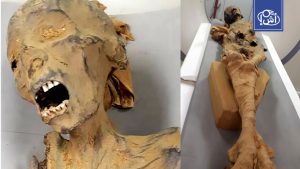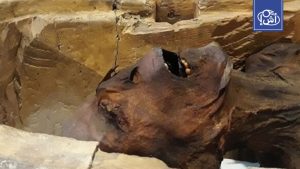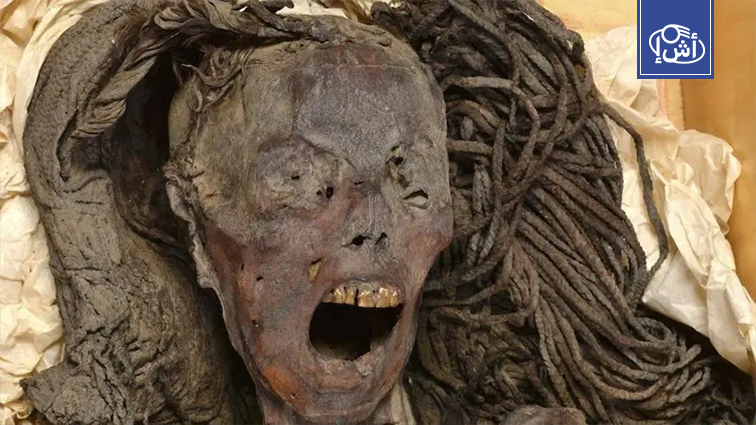A recent study by academic Sahar Selim of Cairo University has revealed the secrets behind the mummy known as the “Screaming Woman” that was found during an archaeological exploration in 1935 at Deir El-Bahari near Luxor.
The CT scans and “virtual autopsy” revealed that the woman, who is believed to have died around 3,500 years ago, suffered from corpse spasm, a rare condition that causes muscle contractions at the moment of death.
The woman, whose name has not yet been determined, was found in the family tomb of Senmut, the architect of Queen Hatshepsut. The study indicated that the woman was around 48 years old, suffered from mild inflammation of the spine and lost some of her teeth.

Her body was carefully mummified using expensive imported ingredients, such as juniper oil and resin, indicating her high social status.
Sahar Saleem denied the hypothesis that the woman was mummified alive, explaining that the explanation for the open mouth is due to the corpse’s spasm that occurred after death due to severe physical or emotional suffering.
She added that the study has not yet determined the exact cause of the woman’s death, and that the possible reasons for the stark expression on her face are still under investigation.

The Pharaonic tomb of Senmut is located in Luxor, Egypt. Senmut was the chief architect of Queen Hatshepsut in the 18th Dynasty of the New Kingdom. His tomb is located in Deir El-Bahri, near Hatshepsut’s mortuary temple.
This discovery opens the door to new interpretations of funerary customs and mummification methods in ancient Egypt, and sheds light on the advanced artistic techniques used by the ancient Egyptians to preserve the appearance of the deceased in the afterlife.
The killing of three Egyptian monks in bloody attacks in South Africa
